The Long Comics History Behind X-Men's Sentinel Program
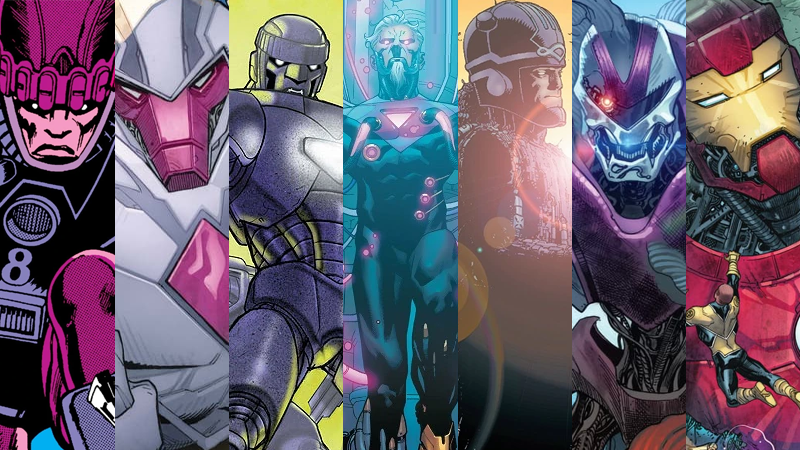
For almost as long as they have been in the comics, the X-Men and mutantkind at large have been stalked by a world that hates and fears them—a world that manifested that hate in the metallic, unflinching face of the Sentinel Program. Just as the X-Men have grown and changed wildly since those early days, so too have their most hateful foes, embracing the series’ mantra of adapting to survive as much as its heroes have.
This week’s episode of X-Men ‘97 weaponized that idea even further by tapping into another classic ‘90s comic element, with the revelation that the real villain pulling the strings behind everything the show’s thrown at us so far—from Mr. Sinister’s machinations, to the Genoshan genocide, and beyond—is none other than Bastion, the Human-Sentinel hybrid that led the Prime Sentinels during Operation Zero Tolerance. But the primes are just one evolution among many the Sentinel threat has taken in 60 years of comic books, so let’s take a walk back through Marvel’s history to see where the Sentinels began—and how far they’ve come in their unyielding command to exterminate mutantkind.
Sentinel MK I
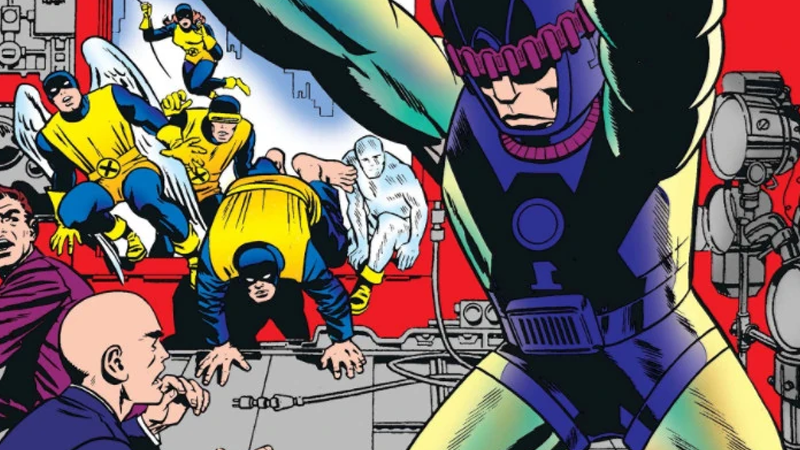
Introduced in 1965's X-Men #14, the early Sentinels still held design ideas and philosophies that have continued to persist throughout legions of iterations since. Their trademark purple-hued color scheme hadn’t kicked in quite yet—nor had their giant scale, appearing just a little larger than your average person.
Developed by Bolivar Trask as a way to safeguard humanity from his bigoted perception of the mutant “threat,” the first Sentinels were actually just as deadly to humans as they were mutants. The Sentinels were controlled not by their human “masters,” but an artificial intelligence—one that deemed that ultimately the best way for humanity to be protected was for them to directly control its existence.
Master Mold
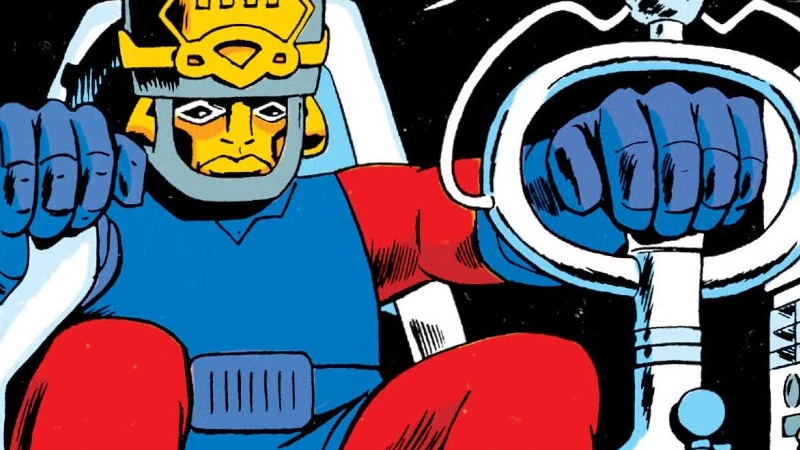
Along with the first Sentinels came their “face”—the Master Mold. It was here that the Sentinels would eventually take their giant-sized from, as the Master Mold was designed by Trask as a Sentinel Overlord that could mass-produce its own army of replicants. Although believed destroyed by the X-Men at the climax of the Sentinel’s debut arc in 1965—and with a regretful Bolivar Trask sacrificing himself to try and make up for his error in designing the Sentinels in the first place—the Master Mold was actually recovered by the U.S. government, passing it on in secret, alongside Trask’s design notes, to Stephen Lang, a scientist with even fewer scruples than Trask when it came to his hatred of mutants.
Over the years, the Master Mold evolved into a character in its own rights—even at one point absorbing Lang’s memories, giving it is own perceived personality—as the leader and de facto producer of Sentinels. It’s also become its own class of Sentinel, with several in existence as walking factories.
Sentinel MK II
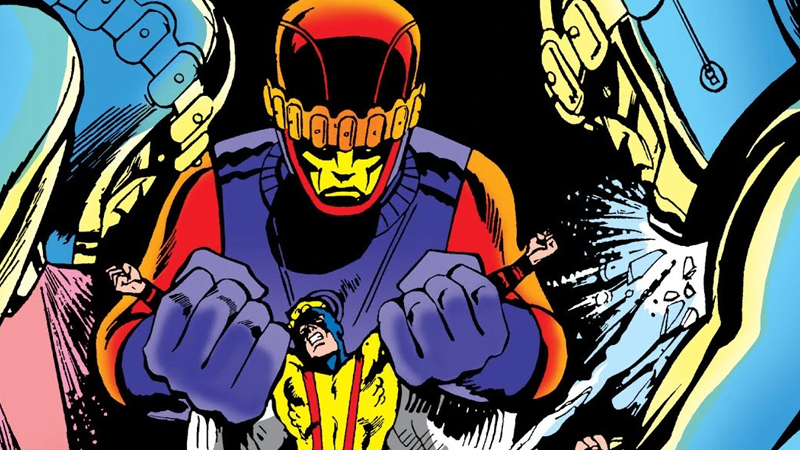
The second generation of Sentinels, however, came more directly from the Trask lineage: Bolivar’s son, Larry. Unaware of his father’s sacrifice and blaming the X-Men for his death, Larry developed a new generation of Sentinels, and in doing so, solidified both a lot of their iconic design hallmarks even further (including the purple color scheme) and also a lot of their abilities. It was with the MK II—led not by a Master Mold, but Sentinel Number Two, a more personified command figure—that Sentinels developed their ability to physically learn from and adapt to mutant abilities used against them.
Larry and the MK II lineage stuck around for a little longer than their predecessors—the MK IIs turned on the younger Trask when they discovered he was in fact a mutant himself, and that Trask the elder had actually masked his powers with a special medallion. Temporarily defeated by being tricked into a futile mission to destroy the sun as the source of all mutant radiation, the MK IIs and Number Two were actually destroyed by the Avengers upon their return, with Larry killed in the crossfire.
Sentinel MK III and the X-Sentinels
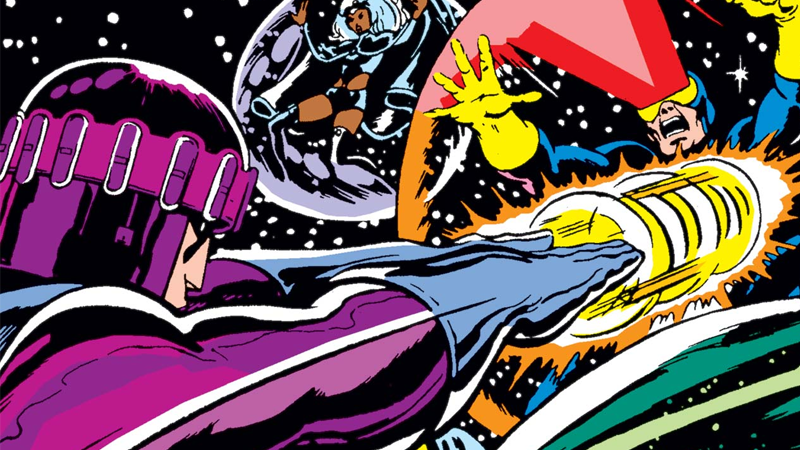
The first generation of Sentinel not built by a Trask, these Sentinels came about from Stephen Lang’s work on the Sentinel designs of both Bolivar and Larry, using a mixing of funding from the U.S. government—who were unaware of Lang’s mutant bigotry, instead tasking him with exploring how the X-Gene manifested superpowers—and also Sebastian Shaw’s Hellfire Club, who were led to be believed they would be spared from the Sentinels’ slaughter.
Lang’s first Sentinels were not as advanced as their predecessors, due to him working off incomplete notes from the Trask models that came before him—and Lang deliberately made them less rudimentary to avoid the independence of the prior generations too, but he also developed one of the first infiltration Sentinels that would kick-start a theme later down the line: the X-Sentinels, lifelike Sentinel replicas of the original X-Men that could even duplicate their mutant powers, used to waylay the second generation of the team.
The Shaw Sentinels
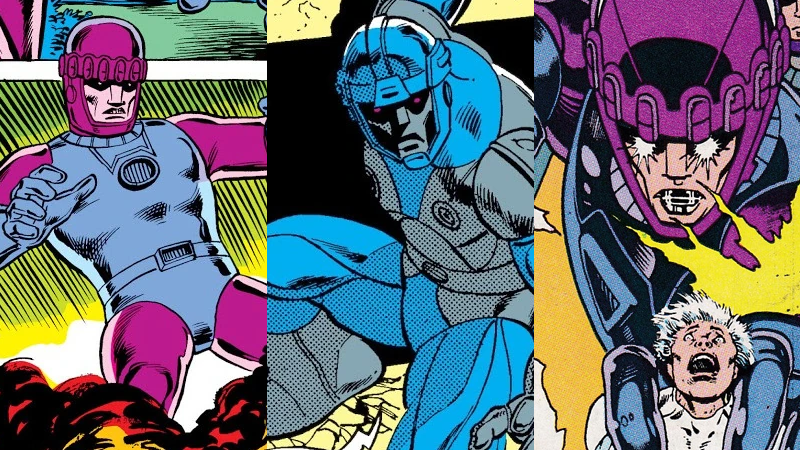
Despite the Sentinels’ legacy as a threat to all mutants, they actually have quite a tangled history with the Hellfire Club, and in particular Sebastian Shaw, in the perpetual hope the horror of the Sentinel Program could be used to crush his foes in the X-Men, but spare him and his cohorts in the process. After Lang’s failures the vastly wealthy Shaw manipulated Senator Robert Kelley—who, after nearly being assassinated by the Brotherhood of Evil Mutants for his campaigning on anti-mutant policies, became a special liason to the U.S. government’s “Project Wideawake,” the Federal response to the emergence of mutants—into recommissioning the Sentinel program.
Unaware that Shaw himself was a mutant (they do that a lot), the U.S. government funded Shaw Industries in the development of three generations of Sentinel—the MK IV, V, and VI. The major differentiators here were mostly in their weapon loadouts, as Shaw largely used these generations of Sentinel for his own revenge, rather than on behalf of Project Wideawake—and like Lang’s work before him, none of these Sentinels were as advanced as the generations made by the Trask family. The biggest difference came in the MK V, which traded out the now-iconic Sentinel color scheme for a cool blue and grey scheme, as well as an updated body frame, but by the MK VI this had reverted.
Nimrod
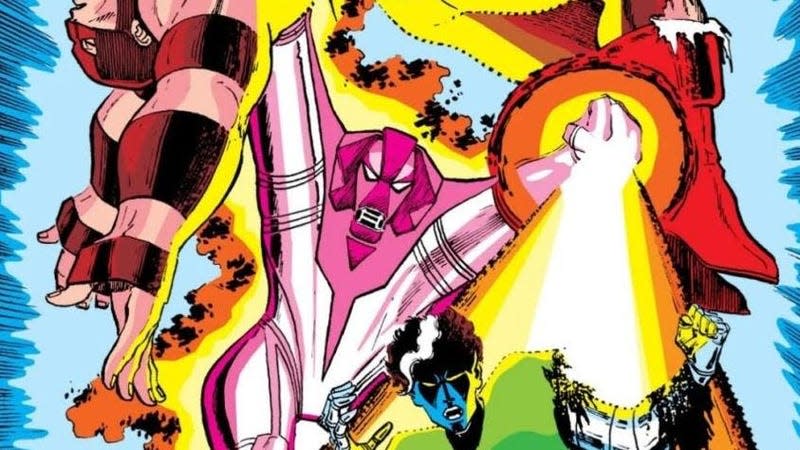
Although he was introduced in the mid ‘80s, Nimrod doesn’t represent the next step in the evolution of the Sentinels of the time—he is, ultimately, the apex of the Sentinel Program in its most horrifying of forms. Originally from Earth-811, the alternate reality originally presented as the dark timeline of “Days of Future Past,” Nimrod was endlessly adaptable, copying technology, weaponry, and abilities at a whim—and was seemingly the harbinger of extinction for mutantkind in multiple realities.
There were multiple versions of Nimrod over the years, beyond the iteration made famous by of “Days of Future Past”—like the one that worked with the human supremacist organization Orchis in the Krakoan Age—but the Nimrod most people know would eventually merge with the remnants of the Master Mold, after interacting with and inadvertently re-activating it. Although now fused with Master Mold, Nimrod had changed during his time on Earth, and actually fought alongside the X-Men to try and stop Master Mold, exerting enough control that their damaged, fused form could be put through the Siege Perilous, the magical, life-altering mystical gateway. We’ll pick up on that a little later, but first...
The Tri-Sentinel
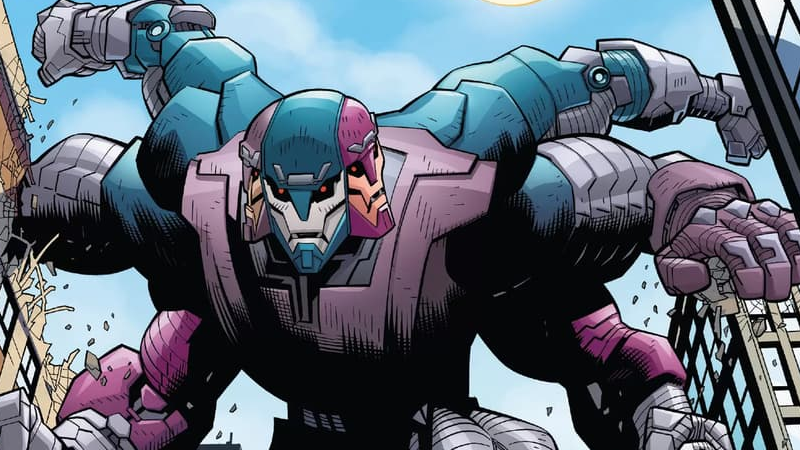
Although still an anti-mutant machine, the Tri-Sentinel was actually more of a Spider-Man villain than an X-Men one. Crafted by Loki by fusing together the remnants of the Shaw Industries Sentinels—the MK IV through VI—the Tri-Sentinel is exactly that: the three loadouts of those generations of Sentinel, and even their arms and heads, fused into one body.
After being destroyed by Spider-Man with the help of his Captain Universe powers, the Life Foundation recovered the Tri-Sentinel’s parts, hoping to control it as a security measure, only for—you guessed it—that not to work. Spider-Man stopped it again with the help of Nova, and then again years later when it had eventually regenerated after Spider-Man had been “split” from Peter Parker during an accident. Comic books!
Bastion and the Prime Sentinels
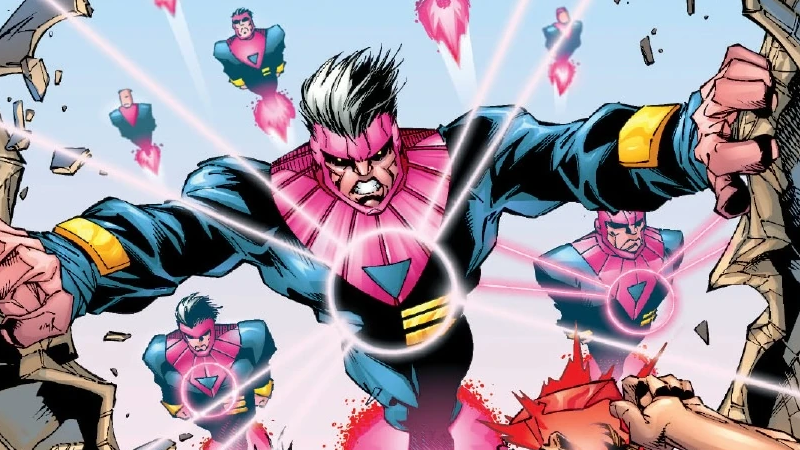
And we’re back to the X-Men! Remember when Master Mold and the fused Nimrod went through the Siege Perilous? That process gave us Bastion, the herald of the Prime Sentinels—which is right where X-Men ‘97 is playing with things.
Master Mold and Nimrod’s fusion gave birth to a cybernetic hybrid that, with no recollection of his past as two of the most powerful anti-mutant weapons to ever exist thanks to the Siege Perilous, adopted the human persona Sebastion Gilberti—but his legacy led to him brushing up against the fringes of several other anti-mutant groups. When his Sentinel prime directors reawakend, Sebastion became Bastion, and put into plan Operation Zero Tolerance, a new Strike Force intended to bring mutantkind to heel. While Zero Tolerance did attempt to revive the past Sentinel programs, Bastion opted for a different track: nano-technology that could turn unwitting human sleeper agents into an army of Prime Sentinels. Erasing their former identities in an instant to transform into cyborg beings with advanced nanotechnology and adaptive super abilities: what we see happen to Bolivar Trask in X-Men ‘97's “Bright Eyes” is a version of this process.
Bastion and the Prime Sentinels were ultimately defeated after the X-Men allied with SHIELD, as Operation Zero Tolerance was the rare Sentinel force not actually mandated by the U.S. government, allowing them to aid in intervening. Some Prime Sentinels did manage to hold on to elements of their human lives after transformation—like the Omega Sentinel Karima Shapandar, who even briefly joined the X-Men before in more recent stories, having her body taken over by an alternate-reality counterpart to become an agent of Orchis.
Sentinel MK VII
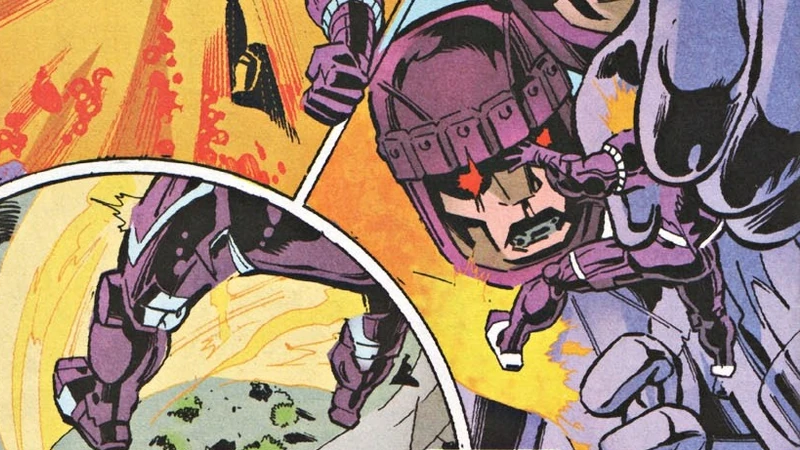
After a brief trip into some truly different Sentinels, we’re back to a more humdrum effort. Like the past few generations, the MK VII was designed by Sebastian Shaw, but this time there was one interesting difference, an idea that will come up again eventually: the MK VII wasn’t an autonomous robot, but remote controlled by human operators.
The Wild Sentinels
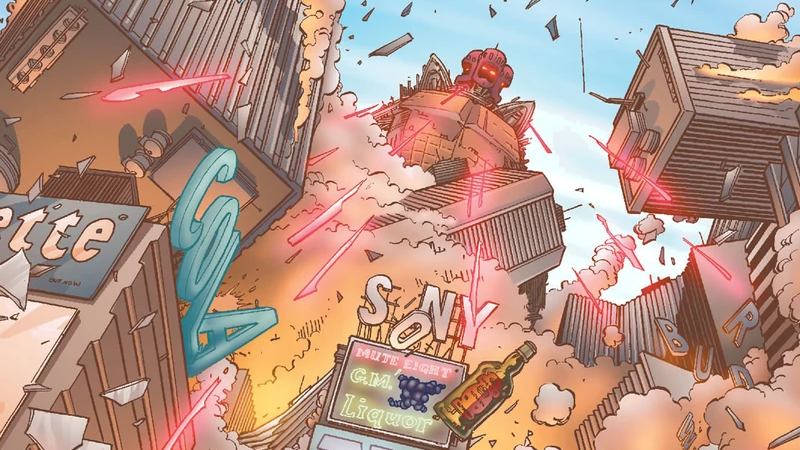
These were the product of a Master Mold that had been buried deep in Ecuador by a U.S. government plan to create a new generation of self-replicating Sentinel forces. Instead of just being built directly from the template of a Master Mold, Wild Sentinels could be created by scavenging technology from their environment to adapt and evolve, giving them a more unique, rugged appearance compared to most Sentinels.
After manipulating the nephew of Bolivar Trask, Donald, and gaining access to his DNA, Cassandra Nova activated the Wild Master Mold to create two massive Wild Sentinels that she sent to Genosha—where they committed an act of genocide, killing over 16 million mutants on the island nation in just a handful of hours.
Nano-Sentinels and Sentinite
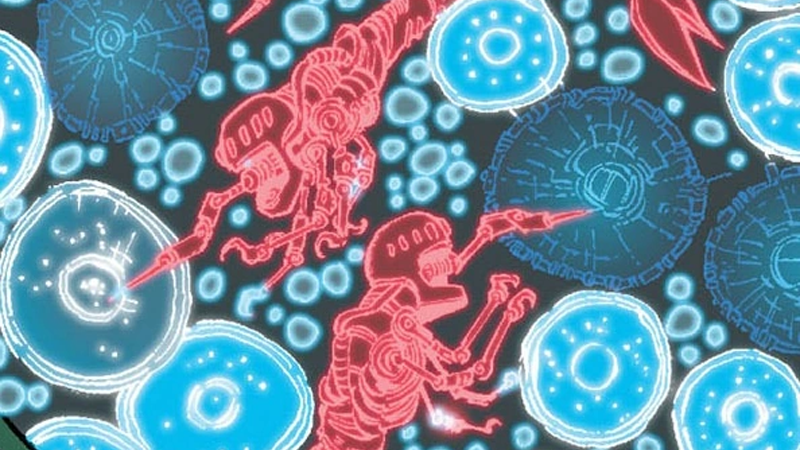
Cassandra wasn’t done there though. As part of her plan to get revenge on her “brother” Charles Xavier, after she infiltrated the X-Mansion and transferred her consciousness into Charles’ body, Cassandra unwittingly infected the X-Men and their students there with legions of replicating Nano-Sentinels, giving them a flu-like illness as their bodies were slowly broken down from within.
The Nano-Sentinels would return alongside Cassandra during the events of X-Men Red, where it was revealed that—after using her vast psionic power to manipulate the mutant engineer Forge into developing them for her—the Nano-Sentinels had been upgraded into Sentinite. No longer just intended to target mutants, but humans as well, Sentinite allowed an infected host to be able to detect the presence of an X-Gene, at which point they would be driven into a horrifying rage in an attempt to extinguish the source. Working together with the Technopath Trinary, Jean Grey’s X-Men team managed to successfully stop Nova from unleashing Sentinite throughout major cities all over the world in her quest to finish off what she’d started on Genosha.
Sentinel Squad ONE
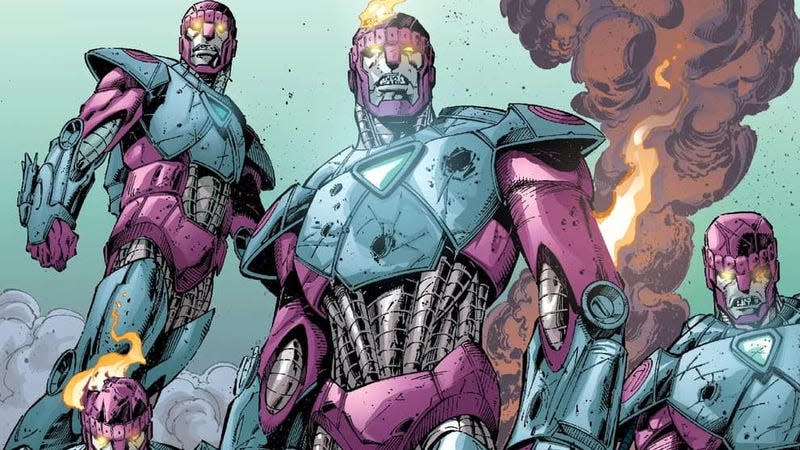
After Scarlet Witch caused the reality-warping event known as the Decimation—which depowered all but a few hundred mutants—Sentinel Squad ONE was developed by the U.S. government’s Office of National Emergency, at the behest of the X-Men’s long time frenemy/liason to the world of politics, Valerie Cooper.
Similar to the MK VII Sentinel, these Sentinels were not autonomous robots, but piloted suits of armor that leveraged technology from Stark Industries and designs from Stark himself to act as a government-mandated alternative to superheroes, and each mech in the squad having different abilities and expertise, like cloaking, reconnaissance, or close and long-ranged combat specialization. Ultimately however, Sentinel Squad ONE was largely resigned to guard duty at the X-Mansion, protecting the remaining survivors of the Decimation.
Sentinex
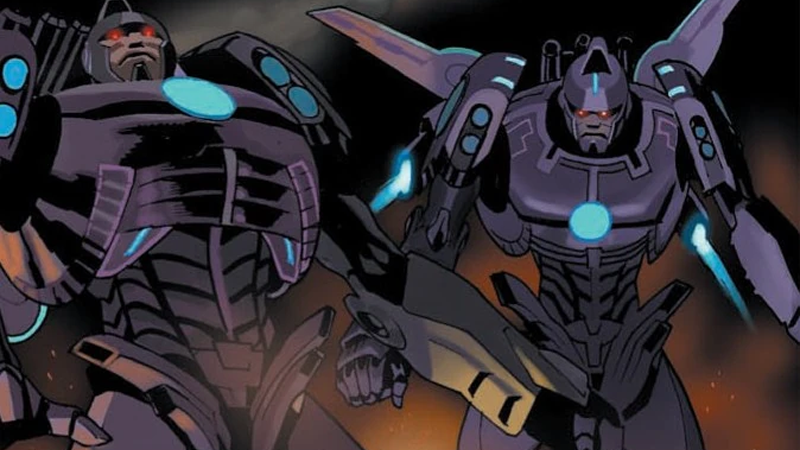
The highly advanced 10th generation of Sentinels, introduced in the “End of Days” timeline of Earth-90411, were developed by an alternate Donald Pierce and almost exterminated all mutantkind in his reality. They were created after the mysterious mutant Ink (who was actually a mutate, rather than a true mutant) managed to revive Dust from her seeming death—sparking a dark timeline where the now soulless-Dust turned on her kind and helped Pierce exterminate them.
The Prototype Sentinel
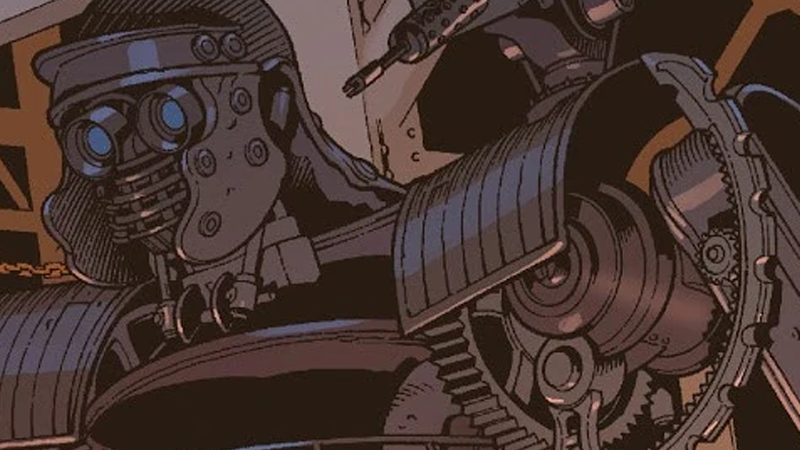
Although not introduced until 2009's Uncanny X-Men #512, the Sentinel Prototype is actually the first of its kind chronologically. Developed by the Hellfire Club in San Francisco during the early years of the 20th century after they had psionically discovered the future potential of mutants awakening on a societal level, the club captured the scientist Nicola Bradley and his wife Catherine, after Bradley had developed a powerful new energy source—hoping they could use it to power the Sentinel. However, the Prototype was destroyed at the behest of the time-traveling specialist group X-Club during their battle with the Hellfire Club, inadvertently causing the 1906 San Francisco earthquake in the process.
The Kilgore Arms Sentinels
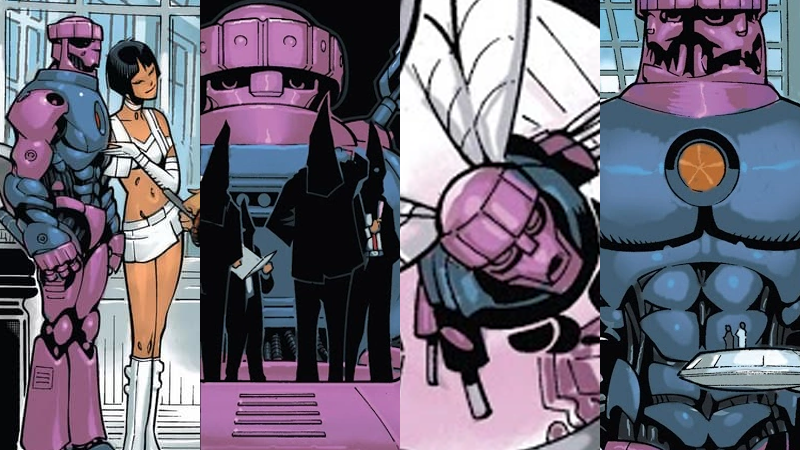
After the Hellfire Club was subject to a hostile takeover by Kade Kilgore and his weapons manufacturer conglomerate, Maximilian Frankenstein developed at least four different generations of Sentinels to be sold to buyers stoked by renewed anti-mutant sentiment. These four generations were the MK X, similar in size to the original Sentinels designed by Bolivar Trask and capable of being folded into a compact briefcase; the MK XI, a treaded all-terrain weapon platform; the MK XII, a winged variant; and the MK III, a variant update to the Tri-Sentinel design.
Sentinel MK VIII
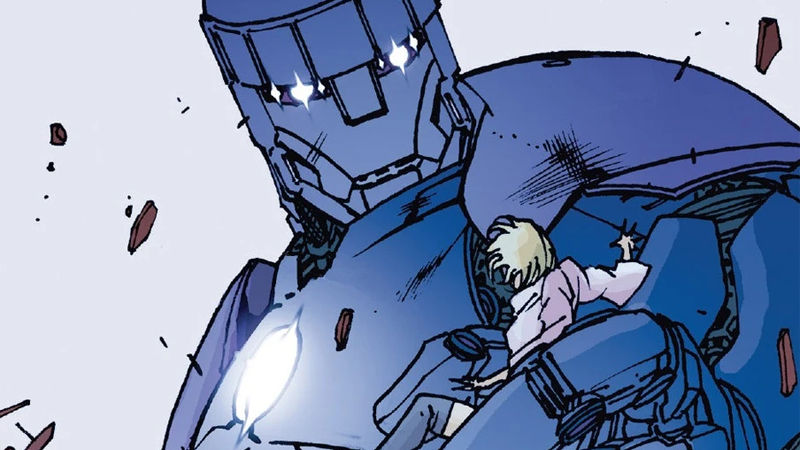
An evolution of the Sentinel Armors used by ONE, the MK VIII were piloted mech suits during the events of “World War Hate,” after Red Onslaught unleashed a reality-altering wave of hatred across the world, which had led to the U.S. president trying to launch the country’s arsenal—and a scheme to recover the nuclear football stolen by X-Factor in an attempt to stop him.
Stark Sentinel MK I
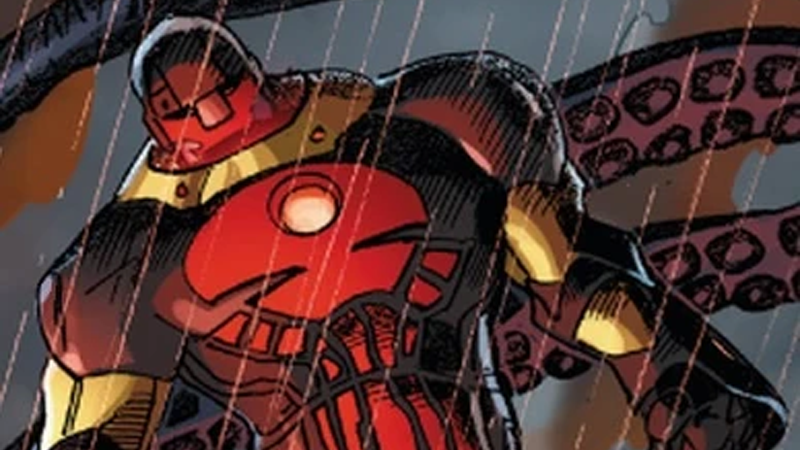
Speaking of Red Onslaught—an even more powerful and evil version of the Red Skull—the first generation of Stark Sentinels were developed after he managed to control Tony Stark into creating a more broad, anti-superhero take on the Sentinels (and utilizing Iron Man technology, although not powered armors like the ONE Sentinels) before wiping Tony’s memory of the task. The first generation was deployed by Red Onslaught in the ruins of Genosha after his ascension, to put a stop to the Avengers’ attempts to bring him in.
Inhuman Sentinels
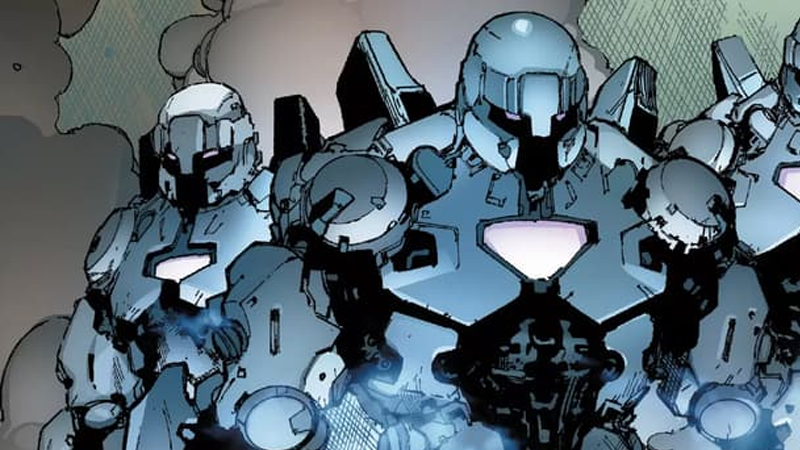
During the events of Inhumans vs. X-Men, when the Terrigen mists that awakened Inhumans to their powers and true forms began covering the whole of Earth and poisoning mutants, a vengeful Emma Frost—grief stricken by the death of Cyclops—forced Forge to develop a squad of Sentinels designed to target Inhumans instead, launching them even after the Inhuman Queen Medusa had managed to abate the Terrigen mists.
Mother Mold
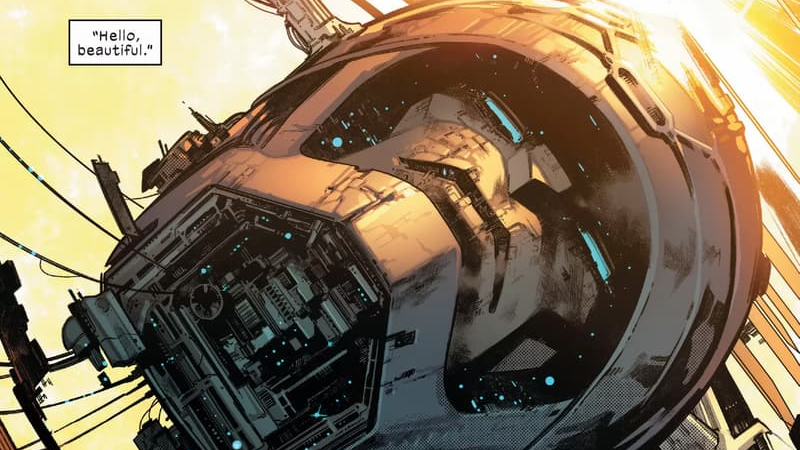
If a Master Mold makes Sentinels, what makes Master Molds? Introduced as an Orchis space station/manufacturing platform during House of X in 2019, the Mother Mold was meant to be the human supremacists’ way of producing Nimrod Sentinels in an attempt to exterminate mutantkind as they sought statehood recognition for a new home on the living island, Krakoa.
A team of X-Men, including Jean Grey, Cyclops, Wolverine, Nightcrawler, Husk, Archangel, and Monet St. Croix were dispatched to destroy Mother Mold in orbit around the sun, and succeeded—with all hands lost in the process, paving the way for the revelation to the audience of mutantkind’s latest evolution: the Krakoan Resurrection Protocols.
Latviathans
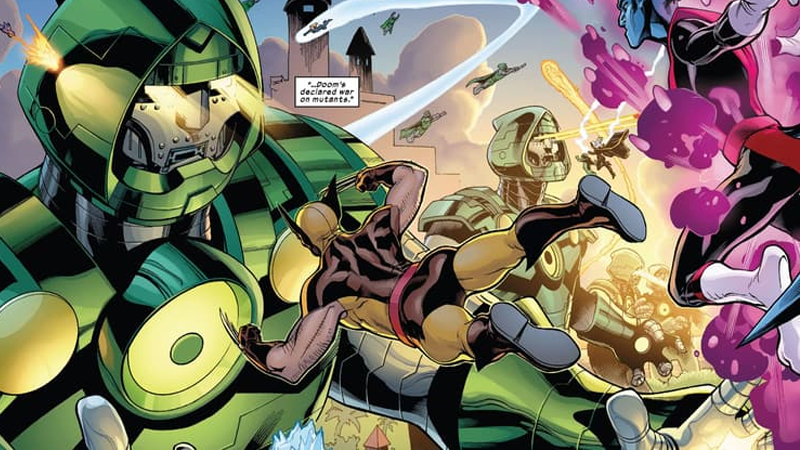
While the X-Men and the Fantastic Four fought over Franklin Richards’ mutant status and his place as a member of Krakoan society, Doctor Doom revealed that he had developed his own line of Sentinels—in the Doom fashion, of course, essentially merging Doombot technology with the size and scope of the Sentinels.
Stark Sentinel MKII
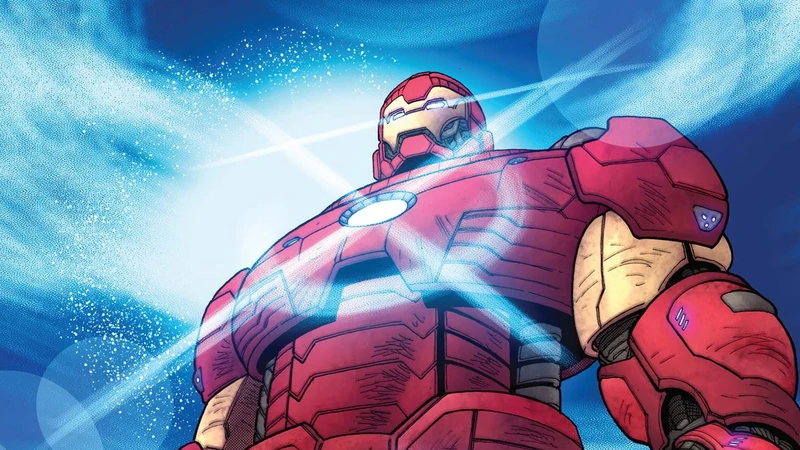
After Orchis leader Fei Long managed to take Stark Industries out from under Tony, the company was used by the group to develop the second generation of Stark Sentinel, leveraging Tony’s latest designs and technological developments to forge a new legion of Sentinels—now once again explicitly an anti-mutant weapon—after the destruction of the Mother Mold. The MK II Star Sentinels played a devastating role at the third Hellfire Gala, which saw many Krakoan mutants massacred and cast out from their island home.
Sentinel Zero
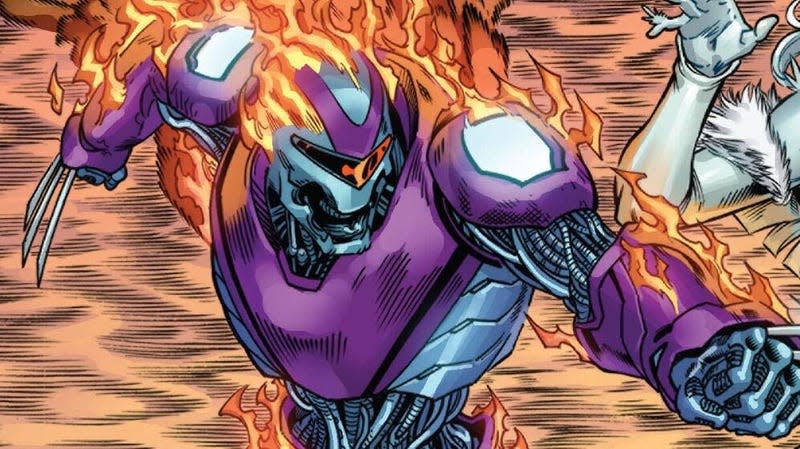
Another Orchis development, the Sentinel Zero program leveraged the Resurrection Protocols and one mutant in particular: Wolverine. When Wolverine left behind his adamantium skeleton whenever he died and was reborn on Krakoa, Orchis swept up the parts and fused them with traditional Sentinel Technology to create the Sentinel Zero soldiers, autonomous robot warriors with Wolverine’s claws and enhanced durability from the pilfered adamantium.
Box Sentinel
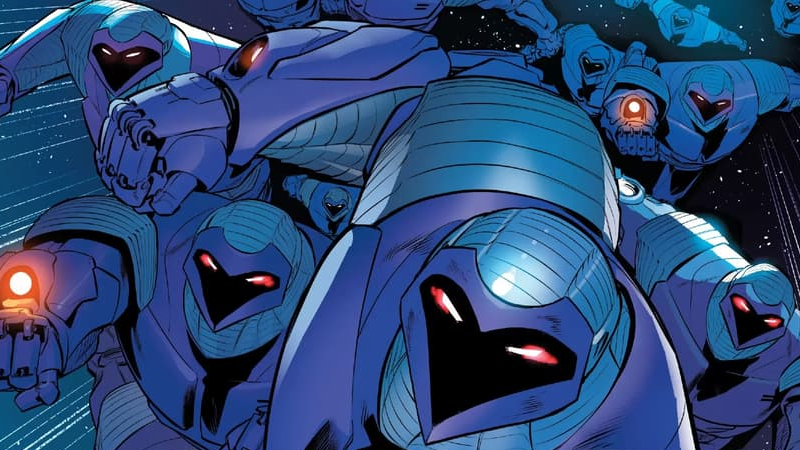
For once, a government that’s not the American one developing Sentinels! This time, it’s Canada. Convinced by Orchis to develop its own version of the Sentinel program, the Canadian government tapped Roger Bochs Jr., the son of technological genius and former Alpha Flight liaison Roger Bochs, to combine his father’s Box cybernetic suit with Orchis technology, creating Sentinels that, in comparison to the Stark MK IIs deployed in the U.S., were meant to be sleeker and faster, with the intention of causing less damage while apprehending mutants.

